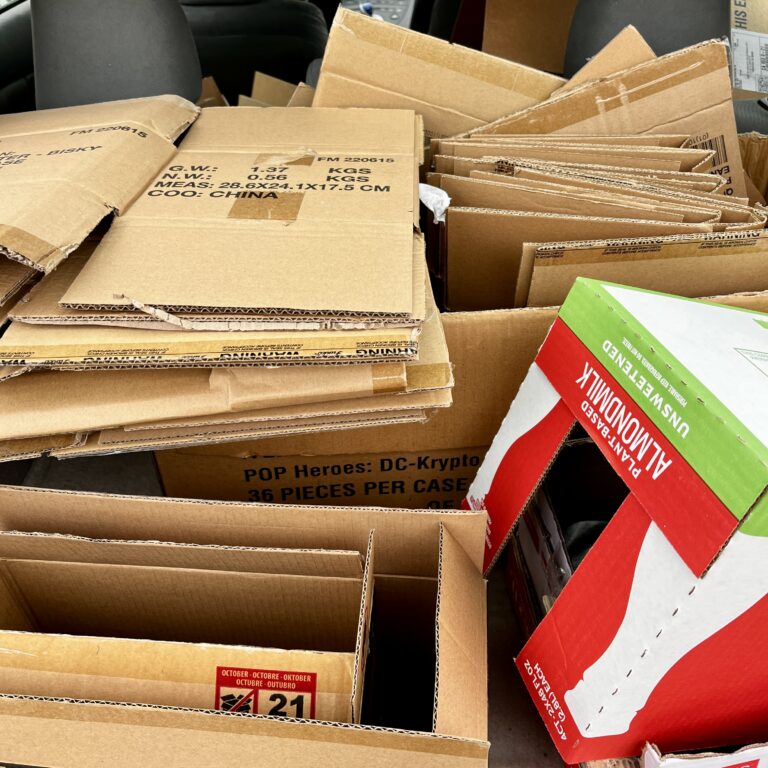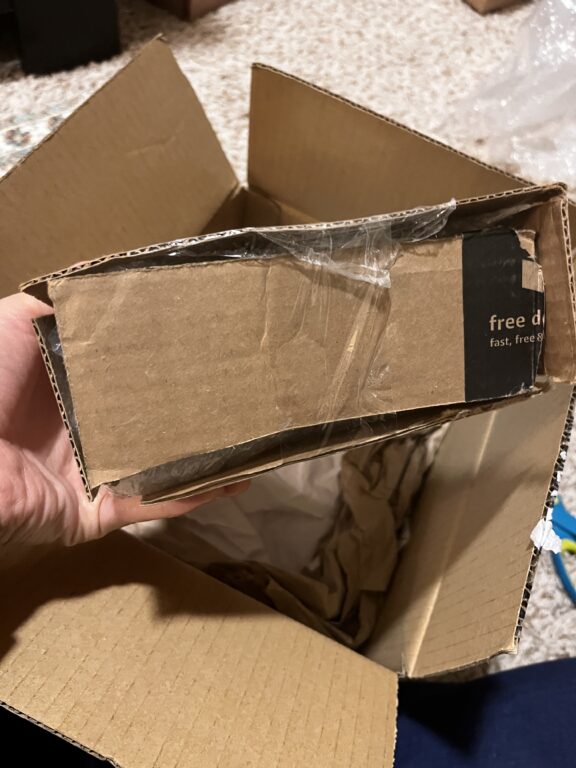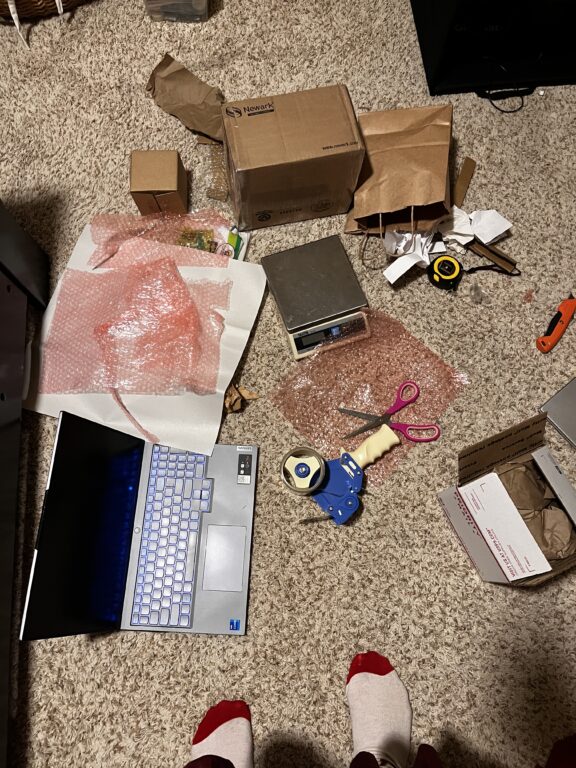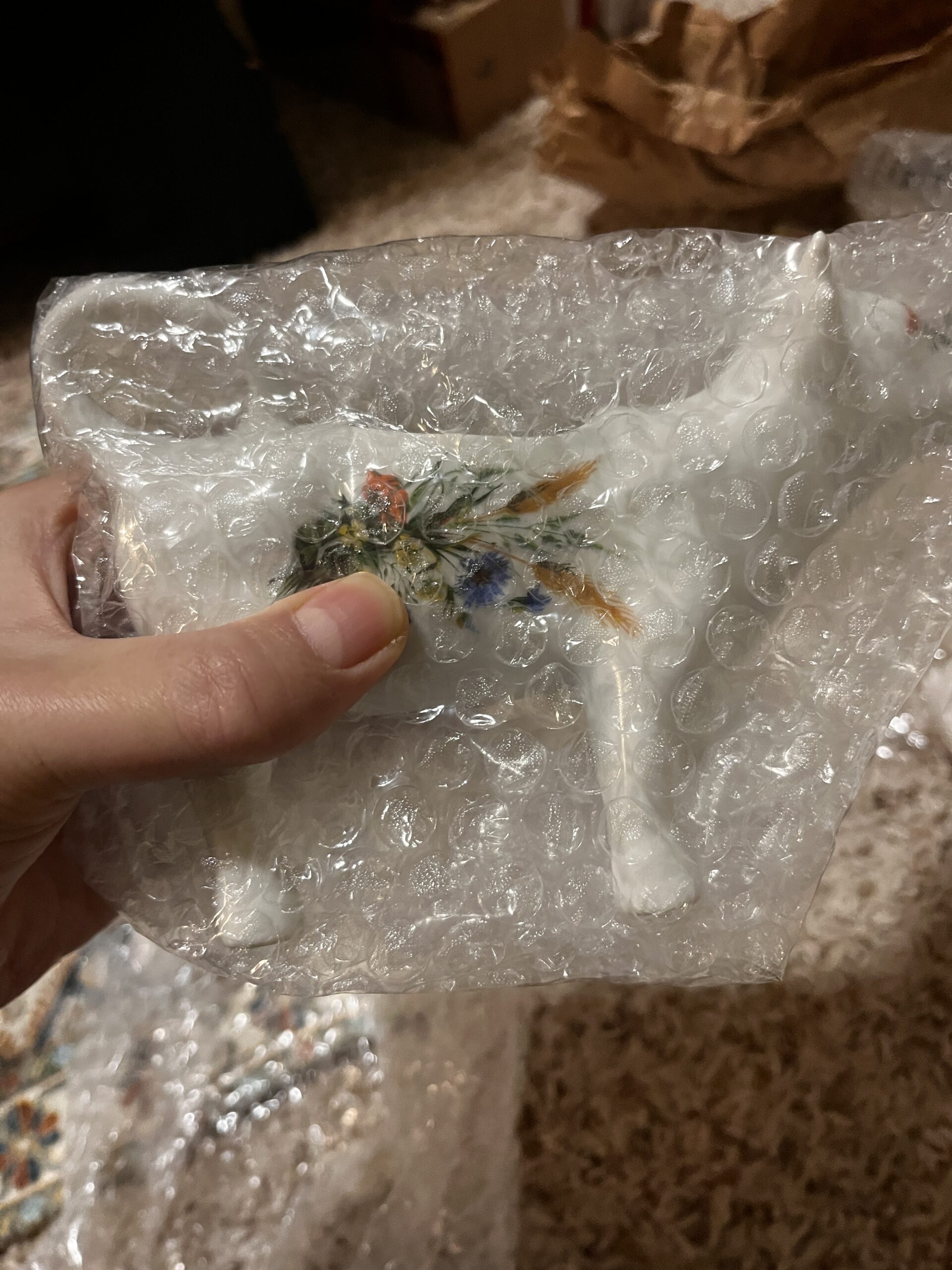This holiday season, I’ve been cutting down boxes as much as I’ve been clickety-clacking away on a laptop writing articles. One of the scariest things about starting an online vintage wares business was figuring out shipping and packaging, but I’ve managed to survive these past few months. I learned a lot of tricks of the trade from my dad, who’s been working as a shipping manager for the last 25 years or so.
Which brings me to the purpose of this post. I thought it would be fun to write a quick blog on packaging delicate vintage items. Christmas is over, but you might find glass and porcelain gifts that you want to send throughout the year for birthdays and other occasions. I feel like people often default to direct shipping from online retailers because the process of packaging a delicate item can be intimidating.
Well, I’m here to tell you that shipping delicate goods is actually a lot easier than it seems! If you’re incorrigibly nervous about shipping off delicate goods, you can always buy insurance for peace of mind, but basic packing precautions often suffice.
Where to get shipping materials

When it comes to shipping materials, I hoard online delivery packages and ask for free boxes whenever I can—my local comic book store and grocery stores often give away freebies after they shelve their inventory. To give my shipments inner support, I also cut down packaging after I unbox items. Recently, I cut down a Levoit air purifier box to stuff my shipments. For filler, I save bubble wrap from online orders and miscellaneous paper scraps from mailers and gift wrap. As long as it’s clean, I’ll keep it!
I occasionally buy shipping paper from Dollar Tree and boxes from Staples, but typically, I avoid buying shipping materials whenever I can.
The box-in-a-box shipping method
To ship fragile pieces, I default to the box-in-a-box shipping method. The idea is basically to pack your goods in a box and then slip it in another box to minimize risk of damage. This is especially important for delicate goods made out of porcelain, resin, or glass. Here’s how to apply the box-in-a-box shipping method:
1. Before I even put my item in the first box, I wrap it with bubble wrap or paper.

If possible, I create at least 1 cm of padding around the item before I place it in the initial box. If you’re using paper, be sure to use white paper for your first layer, since newsprint can transfer ink onto your item.
2. Then, I put the item in the first small box, or make one.

I stuff the box with as much filler as possible so that when I shake it, nothing inside moves. Filler can be wadded paper, shredded paper, bubble wrap, or packing peanuts—whatever you have on hand. If I don’t have a box, I build a makeshift box out of upcycled cardboard pieces. Something like thin cereal box cardboard is OK, but corrugated cardboard is even better since it’s extra thick and gives your item some cushioning.
What I do is cut out four pieces that will fit around the item and tape them together. If the item is thin like a book, I’ll have two thick pieces of cardboard around the biggest part of the item and create a long strip (or two) to wrap around the thinner sides.
3. After securing my inner box with tape, I fill out the main box with filler paper or bubble wrap.

I make sure to put padding around all six sides of the inner box.
4. I tape up the box and attach the shipping label. To keep the box from tearing in the mail, I make sure to tape up all the sides.

I give the box another good shake to make sure that nothing moves around.
Other tips for shipping delicate items
- Bubble wrap pieces and air pillows will help you save on shipping cost since they’re light, but paper is easier to wad up and shape. WIth paper, you can get into every nook and cranny.
- While bubble wrap should be waterproof, you can also put a plastic bag around your item if it is especially prone to water damage. Whenever I get new appliances, I like to save all the little bags for tools and parts.
- Foam gets EVERYWHERE when you rip it up or cut it down. I do like to keep small foam boxes to secure extra delicate figurines, but it’s kind of an annoying material to work with.
- If you have the weight to spare, add in as much filler as possible. I like to add another piece of cardboard on top or around the sides for peace of mind.
- If you need to cut down on packaging weight, you can cheat a bit and cut down the inner flaps (bottom and top, if necessary). However, these flaps add extra cushioning to your package, so avoid doing this if possible!
- Be sure to use heavy duty tape, which you can get from hardware stores or Uline. You don’t want to use magic tape or washi tape.
- Invest in a retractable utility knife. My favorite is this cheap $2 one from The Home Depot.
